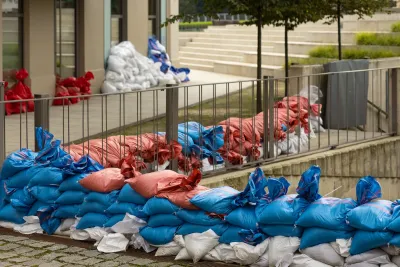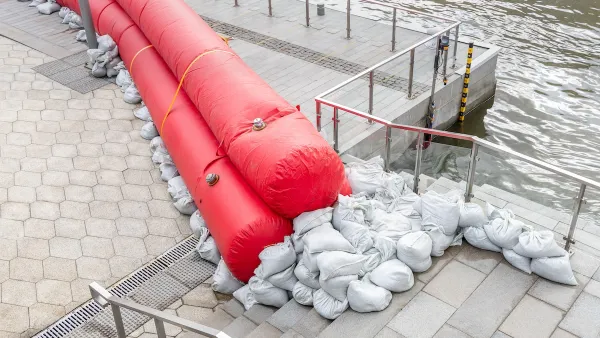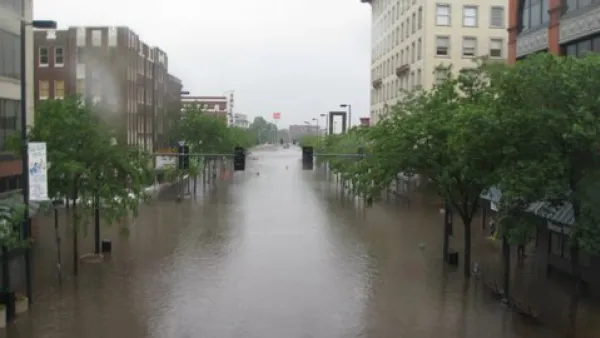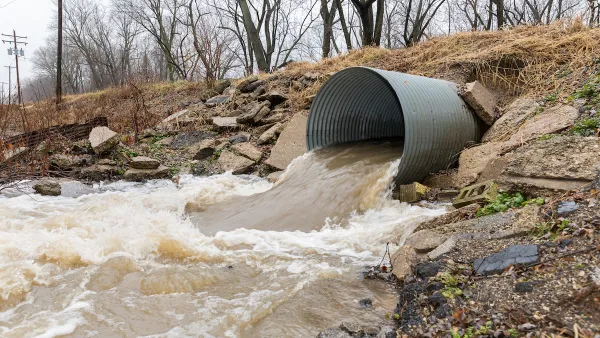Flooding causes over $400 billion in damage in the United States every year.

Flooding is becoming increasingly deadly and costly for American communities. In recent years, the cost of flooding has reached almost $496 billion annually.
In an article in Governing, Carl Smith explains how the crisis is reaching more places — even some thought to be ‘climate havens’ — and how cities are taking action to protect their residents and infrastructure.
To both prepare for potential flooding and conserve water to ensure a steady supply during droughts, cities are building ‘green’ stormwater infrastructure that returns water to the soil and channels it to retention ponds rather than letting it drain to lakes or oceans.
Because watersheds cross multiple jurisdictions, policymakers and planners need to collaborate across cities, counties, and states. “Stormwater needs to be considered as part of the larger water picture. Runoff from city streets or farmland can pollute drinking water. Floods can overwhelm wastewater systems. Ideally, these systems can be integrated in ways that create savings rather than damage. Stormwater retention can recharge aquifers and all sorts of recycled water can be used for drinking.”
FULL STORY: Flooding Is a $400 Billion Problem That's Getting Worse

National Parks Layoffs Will Cause Communities to Lose Billions
Thousands of essential park workers were laid off this week, just before the busy spring break season.

Retro-silient?: America’s First “Eco-burb,” The Woodlands Turns 50
A master-planned community north of Houston offers lessons on green infrastructure and resilient design, but falls short of its founder’s lofty affordability and walkability goals.

Delivering for America Plan Will Downgrade Mail Service in at Least 49.5 Percent of Zip Codes
Republican and Democrat lawmakers criticize the plan for its disproportionate negative impact on rural communities.

Test News Post 1
This is a summary

Test News Headline 46
Test for the image on the front page.

Balancing Bombs and Butterflies: How the National Guard Protects a Rare Species
The National Guard at Fort Indiantown Gap uses GIS technology and land management strategies to balance military training with conservation efforts, ensuring the survival of the rare eastern regal fritillary butterfly.
Urban Design for Planners 1: Software Tools
This six-course series explores essential urban design concepts using open source software and equips planners with the tools they need to participate fully in the urban design process.
Planning for Universal Design
Learn the tools for implementing Universal Design in planning regulations.
EMC Planning Group, Inc.
Planetizen
Planetizen
Mpact (formerly Rail~Volution)
Great Falls Development Authority, Inc.
HUDs Office of Policy Development and Research
NYU Wagner Graduate School of Public Service





























